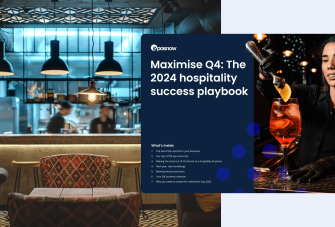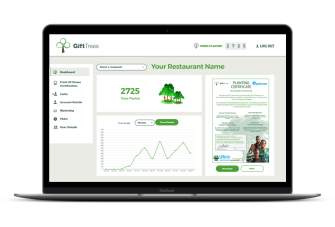What is a Pop-Up Restaurant?
Pop-up restaurants have taken the world by storm. Becoming incredibly popular in the early 2000s in Britain and Australia, pop-up restaurants have become a mainstay of the hospitality industry and will continue to be for years to come.
And it’s easy to see why. This section of the hospitality industry grew by 82% alone in 2018 [1]. With the right approach and setup, it’s possible to make a lot of money delivering great food to the masses.
In this blog, we outline what a pop-up restaurant is and why they’re so popular.
Time-sensitive
When most business owners think of opening up a new restaurant, they usually want it to be around for a while. There’s an assumption that a business has to attempt to be permanent, with a fixed brick-and-mortar location and sustained product offerings.
The idea of the pop-up restaurant turns this idea on its head.
Pop-up restaurants are designed to be temporary - to only trade in situations and contexts where profits are likely to be high.
The hospitality industry, and the food service industry in particular, is heavily affected by seasonality. There are some times of the year when business is good, and others when it’s not. Most restaurants weather the slow periods by cutting costs as much as possible, and then raise spending when business is likely to be higher.
A pop-up restaurant, on the other hand, doesn’t need to worry about seasonality. Pop-up restaurants exist for as long as the owners need them to, whether that’s just for a few days or a few months. Many pop-up restaurants, like food trucks, can be set up alongside certain events, like music or other cultural festivals.
Location
Pop-up restaurants use existing infrastructure for their business. They’re usually set up in places like existing restaurants, empty outlets in shopping malls, personal residences, and similar locations.
Generally, the location of a pop-up restaurant is chosen very carefully. The idea is to maximize the amount of traffic you can get in a short period of time. That’s why so many pop-up restaurants are set up alongside other major events. Interest and foot traffic is guaranteed if they are around for a big event.
A pop-up restaurant can also be used as a test case for a more permanent restaurant. Many restaurant owners will create a pop-up restaurant to test a particular location to see if business in that place is viable in the long term.
Promotions
Pop-up restaurants have become known for using social media to generate interest.
Many pop-up restaurants use social media to generate interest and get bookings. The quick, ephemeral and loud nature of a lot of social media sites, like Instagram and Twitter, are perfect for promoting pop-up restaurants. Social media is great for this kind of promotion as it creates a buzz, a sense of exclusivity, and a sense that people are getting access to something for a limited time.
Pop-up restaurants are so popular they are even appearing in films. The 2014 film Chef, about a restaurant head chef who quits his job to start a food truck, deftly shows how business owners go about promoting their ventures on social media [2].
Youth
The popularity of pop-up restaurants came during the height of the powers of social media sites like Twitter and Instagram. As a result, the business owners and chefs who became popular at this time were doing things that appealed to younger people.
Pop-up restaurants have been particularly useful to younger chefs. At a time when the global economy was sluggish and investment was still quite low, pop-up restaurants offered young chefs to experiment with different types of locations and menus in a way that didn’t cost a lot of money. The success of a lot of pop-up restaurants in the early 2010s allowed many chefs to access start-up capital to cover start-ups costs [3].
Pros of pop-up restaurants
There are a lot of upsides to opening a pop-up restaurant that makes them a far superior business venture than a traditional restaurant.
Testing
A pop-up restaurant allows you to test certain aspects of your restaurant without getting too invested. Chefs and owners can use the relatively low capital investment required to test out new menu items, locations, and pricing strategies to ensure a longer-term venture is viable. If it isn’t, then the owners haven’t lost too much money and they’ve gained valuable information and experience.
Lower costs
Pop-up restaurants tend to have lower start-up costs than normal restaurants. Some pop-up restaurants use places like personal residences or food trucks as venues, which may eliminate the cost of rent for the business. Other pop-up restaurants have taken over locations like abandoned business premises in order to get a deal on rent. They also tend to have fewer overheads.
Creativity
Because pop-ups are limited in timeframe, they offer a unique opportunity for young chefs to gets creative with their output. Without the constraints of long-term viability, many chefs are free to experiment with new ingredients and dishes to see what will work for their venture.
Easy marketing
Studies show that customers are more likely to buy something if there is a limited-time offer involved [4]. Since this is the entire nature of a pop-up restaurant, this aspect of marketing is easy. By creating a sense of time urgency, you can push the idea of an exciting and exclusive restaurant that’s driven by FOMO.
As stated above, pop-ups are tailor-made for social media promotions. These ventures also benefit from interest and attention generated from setting up alongside, or in, well-known locations or events. It’s one of the most effective ways to attract customers.
Cons of pop-up restaurants
While there are a lot of great things about pop-up restaurants, there can also be a lot of drawbacks to operating them.
Limited resources
Because it can be tricky to secure restaurant loans for such ventures, you will probably not have access to a lot of resources. As a result, you may have to get creative with your labour and stock costs if you don’t have much money to start out with.
Balancing acts
Pop-up restaurants are temporary. This means that operators are unable to stick with certain menus and dishes and make the small, incremental changes that may be necessary to make a product successful in the long term. Because of the time constraints, pop-ups are forced to either land on a hit on the first try or sink.
Customer loyalty
While pop-ups restaurants are great for generating buzz, their very nature can make it difficult to retain customers. If you’re only around for a short time, it’s harder to convince people to repeat their business.
Over-reliance of marketing
In order to make pop-up restaurants work a lot of effort has to go into marketing. This can take focus and resources away from daily operations.
Invest in the right tech for your pop-up restaurant
Pop-ups force their owners to deal in razor-thin margins. Because of this, you need to invest in tech that will streamline your operation and help you squeeze every last bit of profit out of your business.
No single investment in your pop-up will help you become more efficient than a top-of-the-line point of sale system.
Epos Now’s Restaurant EPOS will help you take your business to new heights - not only improving your payment processes but also helping you manage your entire business.
- Easily connect to major ordering and delivery apps to create new revenue streams and meet customer expectations
- Track inventory, calculate costs and profit, simplify reordering and integrate with leading accounting software
- Leverage powerful sales reports on any device to boost profitability, reduce wastage and improve employee efficiency
- Track time-at-table and manage floor plans in real-time to boost table turnover
- Eliminate costly errors with automated ordering and seamless communication
- Streamline back of house operations with a comprehensive Kitchen Display System
- Group by course and order type to speed up preparation and reduce customer wait times




